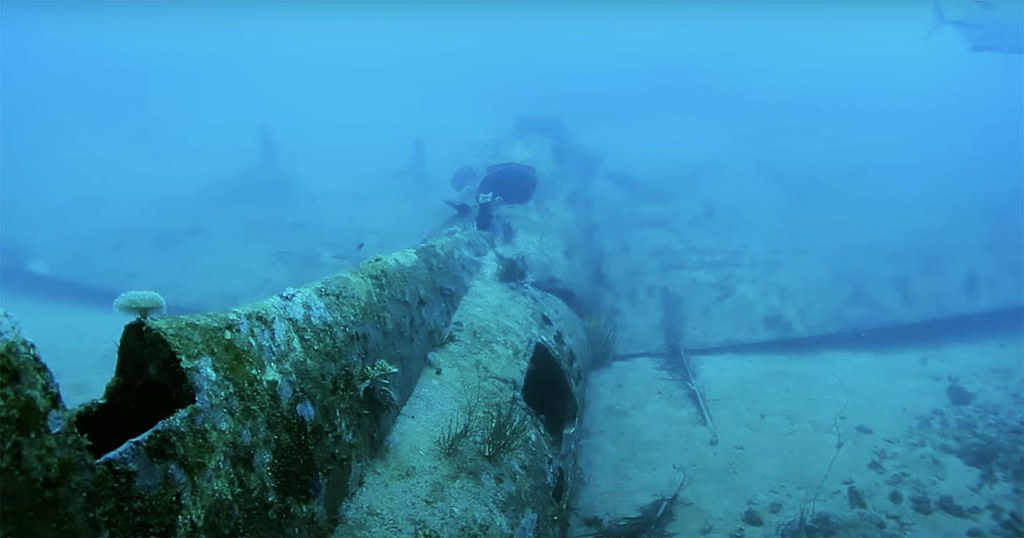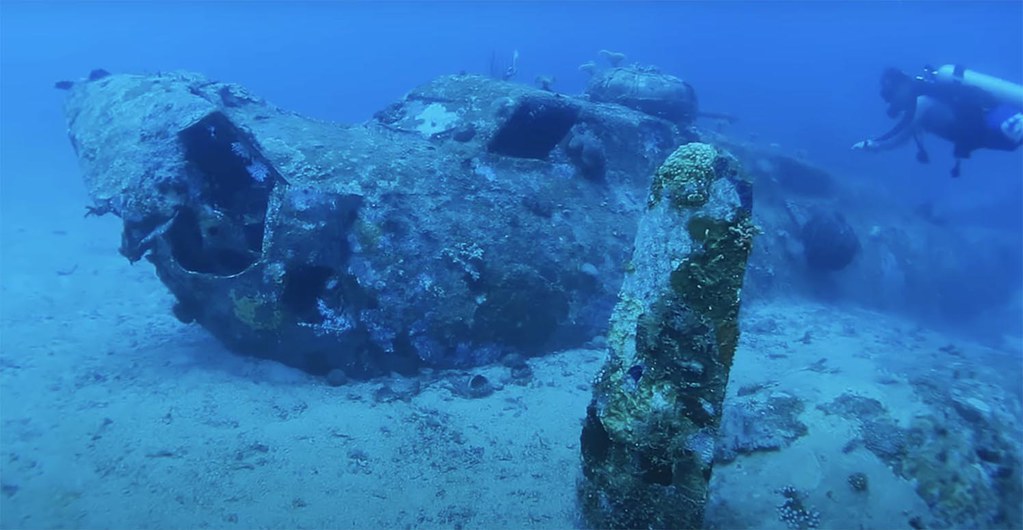The B-17 'Black Jack', a bomber that was missing for 43 years under the sea
On July 23, 1942, a new Boeing B-17F Flying Fortress bomber was delivered to the US Army Air Forces (USAAF).
That plane had the construction number 3206 and serial number 41-24521. It was manufactured by Boeing in Seattle. On August 30, 1942, the plane flew from Hamilton Field, California, to Hickam, Hawaii, to finally complete a very long journey to Australia. Assigned to the 5th Air Force, he was attached to the 63rd Bombardment Squadron (63rd BS) of the 43rd Bombardment Group (43rd BG), being assigned to Captain Kenneth D. McCullar. As noted by Pacific Wrecks, such as serial number of the plane ended in 21, he was given the nickname "Black Jack", with the drawing of the two cards (the Jack and the Ace of Poker) that add up to that number. Later, when the plane was assigned to Lieutenant Harry Staley, he added a second nickname to the port side of the plane: "The Joker's Wild".

On July 11, 1943, the "Black Jack" flew a bombing mission against the port city of Rabaul, on the island of New Britain, Papua New Guinea, which had been captured by the Japanese at the beginning of 1942. During the flight, it had problems with its engines 3 and 4, but it was able to complete its mission. When they returned, they encountered a strong storm that ended up disabling the engines that had caused problems. The pilot was unable to maintain course, they got lost and the plane ran out of fuel. Finally, the crew abandoned it, and the "Black Jack" fell into the sea near Cape Vogel, near Kakau, in Papua New Guinea.

The ten crew members of the "Black Jack" managed to survive and were rescued, but the plane sank into the sea, at a depth of about 50 meters. It remained there for 43 years, until on December 27, 1986 it was discovered by the diver Rodney Pearce in fairly good condition despite the passage of time and the damage caused to the nose of the plane by the collision when falling into the sea. Today, the "Black Jack" is considered one of the best condition B-17 wrecks. A few weeks ago, Curtin University HIVE posted a video with images of a digital scan of this aircraft:
In December 2018, Nomadic Scuba posted this video of a visit to the shipwreck of the "Black Jack":
You can see here some screenshots from the Nomadic Scuba video. Here we see the drift of the plane, with the rudder frames exposed.

The starboard part of the fuselage. In the background you can see the wings, quite intact.

The upper turret of the B-17 , with its two 12.7mm Browning M-2 machine guns pointed aft.

The B-17's port wing engines , half buried at the bottom of the sea.

The cockpit of the B-17, with the damage caused to the nose when it fell into the sea.

|
Don't miss the news and content that interest you. Receive the free daily newsletter in your email: Click here to subscribe |
- Lo más leído
- A British fairytale ruin: the abandoned shoe house on the Isle of Wight
- The interior of the Statue of Liberty torch and the sabotage that canceled its visits
- The supermassive black hole of Phoenix A, the biggest known light-devouring monster
- A virtual tour of ancient Rome in full color, just as it was in its heyday
- The unknown Soviet female cosmonaut who died on a mission: history or hoax?
- A large collection of Volkswagen cars hidden in an abandoned mine in Switzerland
- An old Soviet military plane abandoned from 1971 on a Russian island near Alaska

 ES
ES





Opina sobre esta entrada: